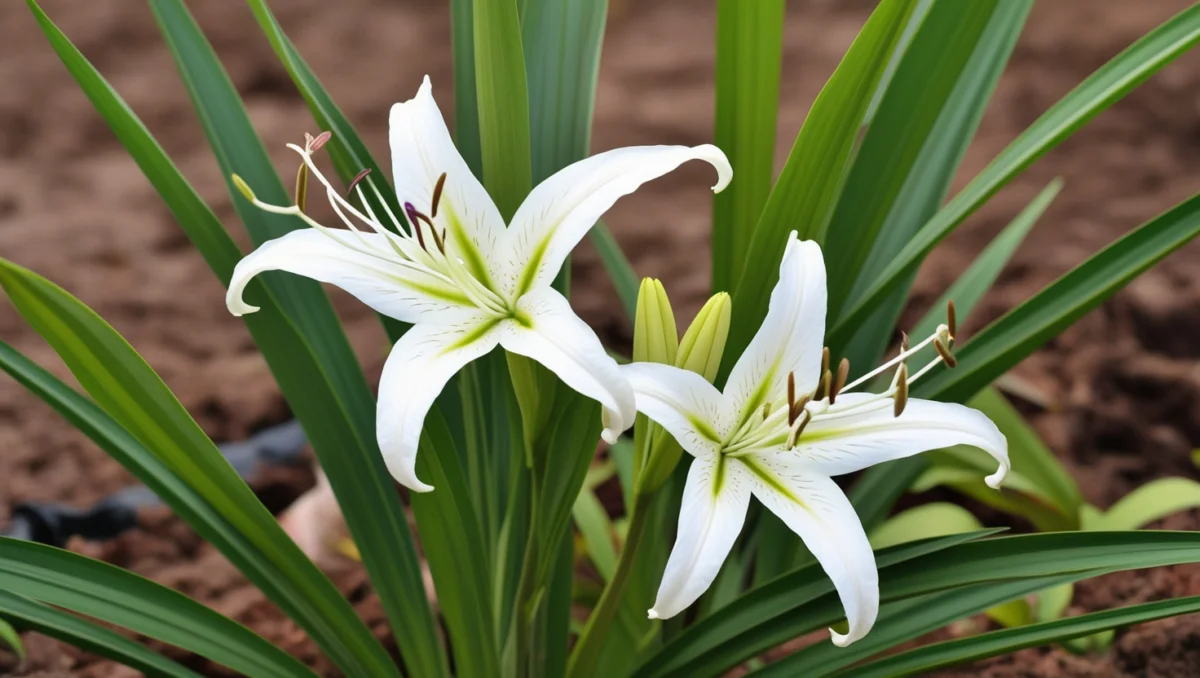
The white spider lily, scientifically known as Lycoris albiflora, is a fascinating flower with a rich history and numerous applications. Beyond its striking beauty, this flower has been a subject of interest in agriculture, culture, and symbolism. In this article, we will explore how the white spider lily helps agriculture, its benefits, uses, and its deep-rooted significance in Japanese culture.
Table of Contents
What Is the Benefit of White Spider Lily?
The white spider lily offers several benefits, particularly in agriculture. One of its primary advantages is its ability to repel pests. Farmers have observed that planting white spider lilies around crops can deter insects and rodents, reducing the need for chemical pesticides. This natural pest control method is not only eco-friendly but also cost-effective.
Additionally, the white spider lily is known for its ability to improve soil health. Its roots help prevent soil erosion, making it an excellent choice for areas prone to heavy rainfall or wind. The plant also contributes to soil fertility by adding organic matter as its leaves decompose.
Another benefit of the white spider lily is its role in biodiversity. By attracting pollinators like bees and butterflies, it supports the ecosystem and promotes the growth of surrounding plants. This makes it a valuable addition to agricultural landscapes.
What Is the Use of Spider Lily?
The spider lily has been used for various purposes throughout history. In traditional medicine, extracts from the plant have been used to treat ailments such as inflammation, fever, and digestive issues. While modern science is still exploring its medicinal properties, the plant’s potential as a natural remedy cannot be overlooked.
In agriculture, the spider lily is often used as a companion plant. Its ability to repel pests and improve soil quality makes it a valuable ally for farmers. Some studies suggest that the plant’s roots contain compounds that can inhibit the growth of harmful fungi, further protecting crops.
The spider lily is also used in landscaping and ornamental gardening. Its unique appearance and resilience make it a popular choice for gardens, parks, and public spaces. The plant’s ability to thrive in various conditions adds to its versatility.
What Does the White Spider Lily Symbolize?
The white spider lily holds deep symbolic meaning in various cultures. In many traditions, it is associated with themes of death, rebirth, and transformation. The flower’s fleeting bloom, which lasts only a few days, is often seen as a metaphor for the transient nature of life.
In some cultures, the white spider lily is planted near gravesites as a symbol of remembrance and respect for the deceased. Its striking white petals are believed to guide souls to the afterlife, making it a poignant symbol in funerary practices.
The flower’s resilience and ability to thrive in harsh conditions also symbolize hope and perseverance. It serves as a reminder that beauty and strength can emerge even in the most challenging circumstances.
What Does the White Spider Lily Mean in Japanese Culture?
In Japanese culture, the white spider lily, known as Higanbana, holds a special place. It is often associated with the autumn equinox, a time when the boundary between the living and the dead is believed to be at its thinnest. During this period, the flower is commonly seen blooming in fields and along roadsides.
The Higanbana is deeply rooted in Japanese folklore and mythology. It is said to grow in the underworld, guiding souls to their final resting place. This connection to the afterlife has made the flower a symbol of farewell and eternal rest.
Despite its somber associations, the white spider lily is also celebrated for its beauty. It is a popular subject in Japanese art, literature, and poetry, where it is often used to evoke emotions of longing, nostalgia, and reflection.
How Does the White Spider Lily Help Agriculture?
The white spider lily plays a significant role in agriculture, offering both practical and ecological benefits. One of its most notable contributions is its ability to repel pests. Farmers have long used the plant as a natural deterrent for insects and rodents, reducing the need for chemical pesticides. This not only protects crops but also promotes a healthier environment.
Another way the white spider lily aids agriculture is through soil conservation. Its extensive root system helps prevent soil erosion, making it an ideal choice for areas with unstable terrain. The plant also enriches the soil by adding organic matter as its leaves decompose, improving fertility over time.
The white spider lily’s ability to attract pollinators is another advantage. By drawing bees, butterflies, and other beneficial insects, it supports the ecosystem and enhances the productivity of surrounding crops. This makes it a valuable addition to agricultural landscapes.
The Role of White Spider Lily in Sustainable Farming
Sustainable farming practices are becoming increasingly important in modern agriculture, and the white spider lily is emerging as a key player in this movement. Its natural pest-repellent properties reduce the reliance on chemical pesticides, promoting eco-friendly farming methods.
The plant’s ability to improve soil health also aligns with sustainable farming goals. By preventing erosion and enhancing fertility, it helps farmers maintain productive and resilient agricultural systems.
Moreover, the white spider lily’s role in supporting biodiversity cannot be overstated. By attracting pollinators and other beneficial organisms, it contributes to a balanced and thriving ecosystem. This holistic approach to farming is essential for long-term sustainability.
The Medicinal Potential of White Spider Lily
While the white spider lily is primarily known for its agricultural and ornamental uses, its medicinal potential is also worth exploring. Traditional medicine has long utilized the plant for its anti-inflammatory and fever-reducing properties.
Modern research is beginning to uncover the scientific basis for these traditional uses. Studies suggest that the plant contains compounds with potential therapeutic benefits, including antioxidant and antimicrobial properties. While more research is needed, the white spider lily could hold promise as a natural remedy for various health conditions.
The Cultural Significance of White Spider Lily in Art and Literature
The white spider lily has inspired countless works of art and literature, particularly in Japan. Its striking appearance and symbolic meaning make it a powerful motif for expressing complex emotions and themes.
In Japanese poetry, the flower is often used to evoke feelings of longing and nostalgia. Its fleeting bloom serves as a metaphor for the transient nature of life, adding depth and poignancy to literary works.
The white spider lily is also a popular subject in visual art. Its elegant form and stark white petals make it a captivating image, often used to convey themes of beauty, mortality, and renewal.
The Ecological Impact of White Spider Lily
The white spider lily has a positive ecological impact, particularly in agricultural settings. Its ability to attract pollinators supports biodiversity, while its pest-repellent properties reduce the need for harmful chemicals.
The plant’s role in soil conservation is another important ecological benefit. By preventing erosion and improving fertility, it contributes to the health and stability of agricultural ecosystems.
Overall, the white spider lily is a valuable plant that offers numerous ecological advantages, making it an important component of sustainable farming practices.
Conclusion: The Multifaceted Role of White Spider Lily
The white spider lily is much more than a beautiful flower. Its benefits in agriculture, its uses in traditional medicine, and its deep cultural significance make it a truly remarkable plant. From repelling pests and improving soil health to symbolizing themes of life and death, the white spider lily has a multifaceted role that continues to captivate and inspire.
Whether you are a farmer looking for natural solutions, a gardener seeking a unique addition to your landscape, or someone interested in the cultural and symbolic meanings of flowers, the white spider lily offers something for everyone. Its resilience, beauty, and versatility make it a plant worth celebrating.

